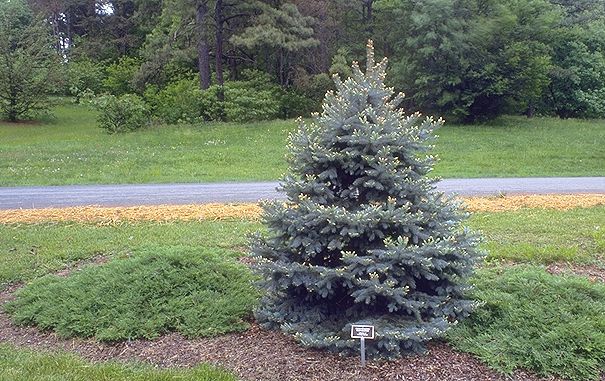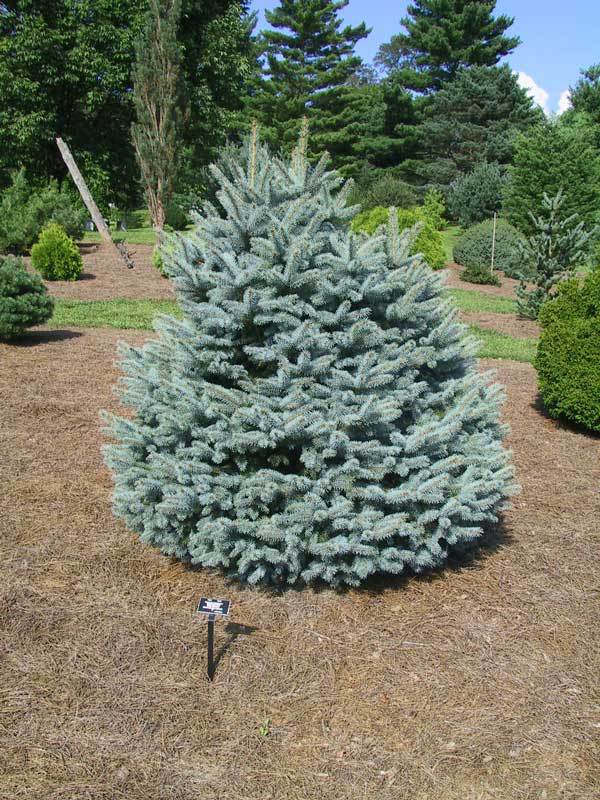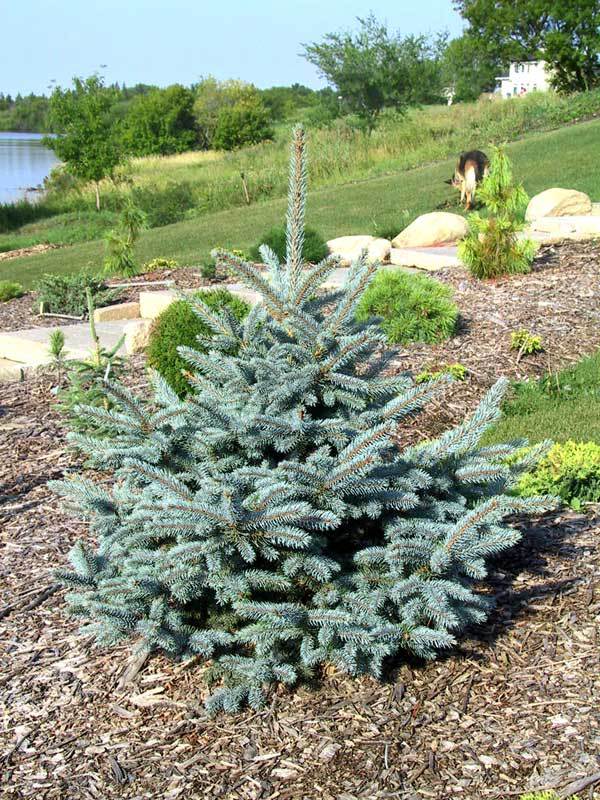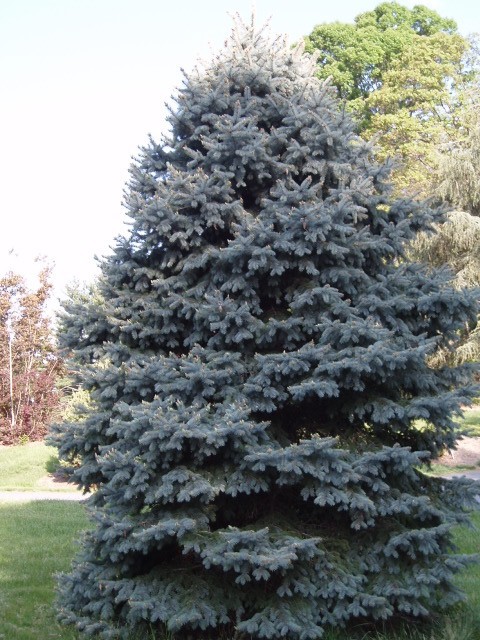Picea pungens 'Baby Blue Eyes' is a very dense, pyramidal, slow-growing selection of Colorado spruce with sky-blue foliage. Its dense form makes its strong blue color stand out very nicely. It is reported to be not as cold hardy as most plants in this species, reported to suffer winter die back in USDA Zone 3. After 10 years of growth, a mature plant will measure 5.5 feet (1.8 m) tall and 3 feet (1 m) wide, an annual growth rate of 6 to 8 inches (15 - 20 cm).
This cultivar originated as a seedling selected in 1972 by Verl Holden Nurseries, Silverton, Oregon, USA. Curiously, Holden patented (U.S. Plant Patent 5457 1985) the seedling under the peculiar name, "Baby Blueyes." This name never gained traction in the nursery trade, where it is universally seen listed as 'Baby Blue Eyes.'
Conifer enthusiasts should also be aware of a conifer in the market called Picea pungens Baby Blue®. These plants are seedlings of Picea pungens 'Glauca' and as such, will all be slightly different from each other and not appropriate for cultivar status. Confusing that matter further is the fact that Picea pungens 'Glauca' has become a generic name for any Colorado Blue spruce. It's simply not possible that all P. pungens 'Glauca' originated from the same clone.



